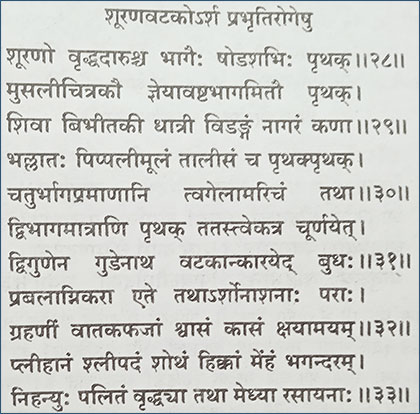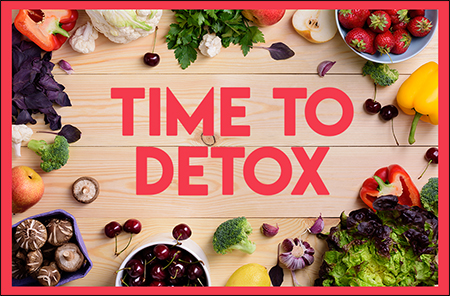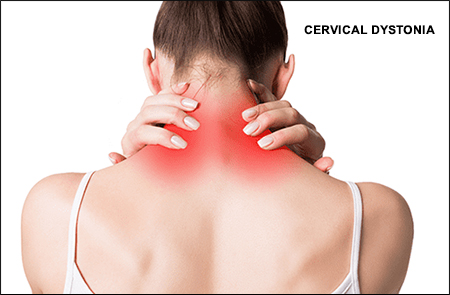Introduction
Suran Vatak is a classical formulation mentioned in sharangdhar samhita. It is the perfect classical ayurvedic formulation for Arsha (Piles). Piles is a condition in which there is inflamed and swollen mass formed by the accumulation of tissue and veins inside and outside the anus. Piles occur due to chronic diarrhea, chronic constipation, heavy weight lifting, straining during passing stools and even pregnancy. As per ayurveda it is known as arsha. According to acharya vaghbhata, the mansankur (fleshy growth) which cause obstruction in the anal region and gives pain like the enemy is known as arsha. So now let's discuss all about suran vatak and its benefits in piles and other disorders.
Ingredients Used in Suran Vatak
- Suran (Amorphophallus paeoniifolius) - 16 parts
- Vidhara (Argyreia nervosa) - 16 parts
- Musli (Chlorophytum borivilianum) - 8 parts
- Chitrak (Plumbago zeylanica) - 8 parts
- Haritaki (Terminalia chebula) - 4 parts
- Bibhitaki (Terminalia bellirica) - 4 parts
- Amalaki (Emblica officinalis) - 4 parts
- Vaya vidanga (Embelia ribes) - 4 parts
- Shunthi (Zingiber officinale) - 4 parts
- Pippali (Piper longum) - 4 parts
- Bhilawa (Semecarpus anacardium) - 4 parts
- Pippali mool (Piper longum) - 4 parts
- Talish patra (Abies webbiana) - 4 parts
- Dalchini (Cinnamomum verum) - 2 parts
- Choti elaichi (Elettaria cardamomum) - 2 parts
- Marich (Piper nigrum) - 2 parts
- Gud (Jaggery) - Twice the amount of churna of the above ingredients
Description Of Ingredients
1. Suran (Amorphophallus paeoniifolius)
Suran (Amorphophallus paeoniifolius) is also known as elephant yam. It has pungent and astringent taste, light and dry qualities, hot potency, pacifies vata and kapha dosha and has arshogana as a special effect. It also helps in regulating blood flow which in turn regulates blood pressure levels. Also it helps in removing clots from the blood vessels so due to this it is effective in the treatment of piles.
2. Vidhara (Argyreia nervosa)
Vidhara (Argyreia nervosa) is also known as vriddha daru. It has great qualities such as rasayana and shukral. Which means it promotes anti-ageing and rejuvenating properties along with improving the quality and quantity of sperms. Other properties are sara (promotes purgation) so it prevents constipation that is one of the main causes of piles.
3. Musli (Chlorophytum borivilianum)
As per ayurveda musli has a benefits such as vrushya (improves vigour), rasayani (anti-ageing), bruhmana (nourishing) so due to all these properties musli provides its special reference in making this classical formulation effective as rasayana and vajikarana.
4. Chitrak (Plumbago zeylanica)
Chitrak (Plumbago zeylanica) includes properties such as deepaniya, shoola prashmana and arshoghana. All these properties make chitrak responsible for making suran vatak beneficial for improving appetite and enhancing digestion strength, also it is effective in relieving pain so helps in alleviating pain in piles also.
5. Haritaki (Terminalia chebula)
Haritaki has the properties that are very best as deepaniya (improves digestion health), anulomani (normalize the karma of apana vata- corrects bowel movements, urine output and other pravahana karma through anal, urinary and vaginal orifices). Both these properties are helpful in IBS like conditions and also helpful in relieving constipation.
6. Bibhitaki (Terminalia bellirica)
It includes great benefits like bhedana (good laxative properties), kasanashanam (relieves cough), keshya (improves the quality of hairs and prevents greying of hairs). Due to these properties it aids suran vatan to show miraculous effects in cough and graying of hairs.
7. Amalaki (Emblica officinalis)
Amala (Emblica officinalis) is panchrasa yukta [madhura (sweet), amla (sour), katu (bitter), tikta (pungent), kshaya (astringent)] and lavana (salty) varjita (not included) due to which it pacifies tridosha (vata, pitta and kapha and have raktapitta ghana properties (useful in bleeding disorders) and due to both these properties it is beneficial in piles. It includes other benefits also like vrishya (improves vigour), prameha ghana (cures diabetes and urinary disorders), rasayana (anti-ageing) and kanthya (good for the throat).
8. Vaya Vidanga (Embelia ribes)
Vaya vidanga (Embelia ribes) has properties like sara (promotes purgation), deepaniya (promotes digestion), pramehahara (cures diabetes and urinary issues).
9. Shunthi (Zingiber officinale)
Shunthi (Zingiber officinale) includes properties such as pungent taste, heavy, dry and piercing qualities and hot potency, due to these properties shunthi has great effect on pacifying kapha. Due to these kapha balancing properties it has benefits such as Viband hara (relieves constipation), anaha hara (relieves bloating and gas), shwasa hara (alleviates chronic respiratory diseases), kasa hara (cures cough).
10. Pippali (Piper longum)
Pippali (Piper longum) balances vata dosha and helps in improving digestion strength along with pitta avrodhani properties which means it prevents pitta to aggravate. It also has purgative properties that helps in relieving constipation which in turn aids to cure piles.
11. Bhilawa (Semecarpus anacardium)
Bhilawa has more effective function regarding kapha so it mainly responsible for making suran vatak effective for diseases such as prameha (diabetes and urinary disorders), kasa (cough), shoth (swelling), IBS, IBD and many other conditions associated with vitiated kapha.
12. Pippali mool (Piper longum)
It has carminative (relieves flatulence) and digestion promoting properties due to laghu and ruksha guna along with hot potency. Other properties of pippali mool are shleshma nashnam (reduces kapha), bhedi (promotes purgation), pleehanut (cures spleen enlargement), shwasahara (alleviates asthma), kshayahara (useful in chronic respiratory diseases and tuberculosis) and many more kapha relieving properties.
13. Talish patra (Abies webbiana)
It is best in relieving cough and mucus including respiratory conditions. Along with that it supports healthy digestion and eliminates ama dosha (toxins) from the body. Also it has agni deepaniya properties which helps in relieving anorexia.
14. Dalchini (Cinnamomum zeylenica)
It is the very best diuretic due to which it promotes a healthy urinary system by cleansing the bladder, fighting urinary infections and curing dysuria. Also it has great vata balancing properties thus helps in alleviating vataja arsha (piles associated with vata dosha).
15. Choti elaichi (Elettaria cardamomum)
Chotti elaichi is also very useful in relieving dysuria and urinary retention. Along with that it is very helpful in improving anorexia by promoting healthy digestion. With these benefits it also alleviates pitta dosha which in turn relieves all types of burning sensation in the body.
16. Marich (Piper nigrum)
This herb is generally having ruchikaraka properties which means it assists in relieving anorexia and promoting digestion strength. Marich (Piper nigrum) includes finest properties like katu and theekshana guna that aids in curing all types of kaphaja conditions.
17. Gud (Jaggery)
Gud is added to this formulation to make tablets. Otherwise it also has some health benefits like it cures splenomegaly and also has perfect relief in heart conditions by regulating blood pressure levels.
Method Of Preparation
- Take sixteen parts of surana (Amorphophallus paeoniifolius) and vidhara (Argyreia nervosa), 8 parts of musli (Chlorophytum borivilianum) and chitrak (Plumbago zeylanica), 4 parts of Haritaki (Terminalia chebula), Bibhitaki (Terminalia bellirica), Amalaki (Emblica officinalis), Vaya vidanga (Embelia ribes), Shunthi (Zingiber officinale), Pippali (Piper longum), Bhilava (Semecarpus anacardium), Pippali mool (Piper longum), Talish patra (Abies webbiana), 2 parts of dalchini (Cinnamomum verum), Choti elaichi (Elettaria cardamomum), maricha Marich (Piper nigrum) and make a fine powder of all.
- Now add gud (jaggery) twice the part of fine powder and make pills out of it.
- Keep it in a dry and air tightened jar and use it accordingly.
Medicinal Properties
- Suran vatak helps in regulating blood flow which in turn regulates blood pressure levels. Also it helps in removing clots from the blood vessels and promoting healthy blood flow.
- Provides great qualities such as rasayana (anti-ageing and rejuvenating properties) and shukral (improves the quality and quantity of sperms).
- Helpful in nourishing and strengthening the muscles.
- Have bhedana properties which promotes purgation and cures constipation.
- Fulfilled with deepaniya properties that helps in inducing good digestion health.
- It also includes keshya properties which helps in preventing hairs from graying before old age.
- Have very finest kapha alleviating properties which helps in curing a number of kaphaja conditions like cough, cold, bronchitis, IBS, IBD, etc.
Dosha Karma (Effects on dosha)
It pacifies vata and kapha dosha.
Dosage
1-2 tablets twice daily or as prescribed by the physician according to the condition.
Classical Indications
Arsha Roga (Piles), Vata kaphaja grahani (IBS), Shwasa (Dyspnoea), Kasa (cough), kshaya Roga (Tuberculosis), Pleeha vridhi (Spleen enlargement), Shaleepada (filariasis), Shoth (swelling), Bhagandar (fistula in ano), Greying of hairs, Aphrodisiac, Tonic for mind, Rasayan (Rejuvenator).
Side Effects
There is no side effect of this classical formulation if taken in the prescribed form. So take it under the prescribed form by the physician.

Conclusion
Suran vatak is an ayurvedic classical formulation which is mainly indicated in arsha roga (piles). It is mentioned in sharangadhara samhita/Madhyama khanda/ch-7/Shlok No-28-33. Here in this study we explained all about suran vatak, how it is prepared, what are the ingredients used in this classical formulation. As we read earlier that it is best in curing piles also along with that it helps in alleviating other conditions also like high blood pressure, cough, diabetes, urinary problems, chronic respiratory conditions, vitiated gut health and curing IBS, IBD and constipation.
https://ift.tt/bwnWDCx
https://ift.tt/ShlJmpC











